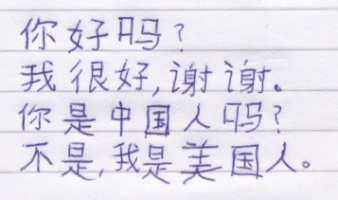
I’ve always had a problem answering the question “Can you speak Chinese?” What exactly does the speaker mean by that question? Do you need to be fluent in the language to answer that question affirmatively? And if so, what level do you need to reach to attain “fluency”? To complicate things further, one’s listening / speaking skills might be a lot more developed than their reading / writing skills, so how do you factor that into the picture?
You will find that as you learn a new language, there are certain levels of fluency that you come across. The hardest part is crossing from one level to another, as this is a jump that many don’t make. The reasons for this vary from person to person, but in general we tend to get relaxed in our comfort zone. In the early stages, you learn enough to survive where you are. To get to the next level requires extra effort on your part which may affect your daily routine. Most would rather stay in their comfort zone than expend this extra effort.
I have noticed this resistance by analyzing feedback and statistics for the users of my course as we cross from one level to another. It would be a much more pleasant experience for basic listeners, for me to continue teaching the course in the format used in earlier lessons where a dialog is presented in Chinese, then explained completely in English. However, by adding Chinese to the explanations in later lessons, I am forcing the listener to consult the translations and word bank where necessary, which of course requires extra effort on their part.
During my recent experience working with individuals of this course, I also found it interesting that different users used different standards to decide when to progress to later lessons. Some students wouldn’t continue unless they understood 90% plus of the material and vocabulary used in a lesson. Others were more lenient and would continue on despite much less retention. Of course there is also the question of what exactly you are trying to learn. For some, having proper pronunciation was most important. Others were more interested in vocabulary or grammar usage. Some might have mastered these skills and were now going through earlier lessons to shore up their reading skills.
I think it would be quite an accomplishment for a user to actually start the CLO course from the first lesson and be able to progress at their own pace all the way to the most recent lessons. Hopefully the tools we have added and will continue to add along the way will help users accomplish the individual goals and targets they have set for themselves. If there are certain hints or strategies that have worked well for you, please share them with the rest of us.




